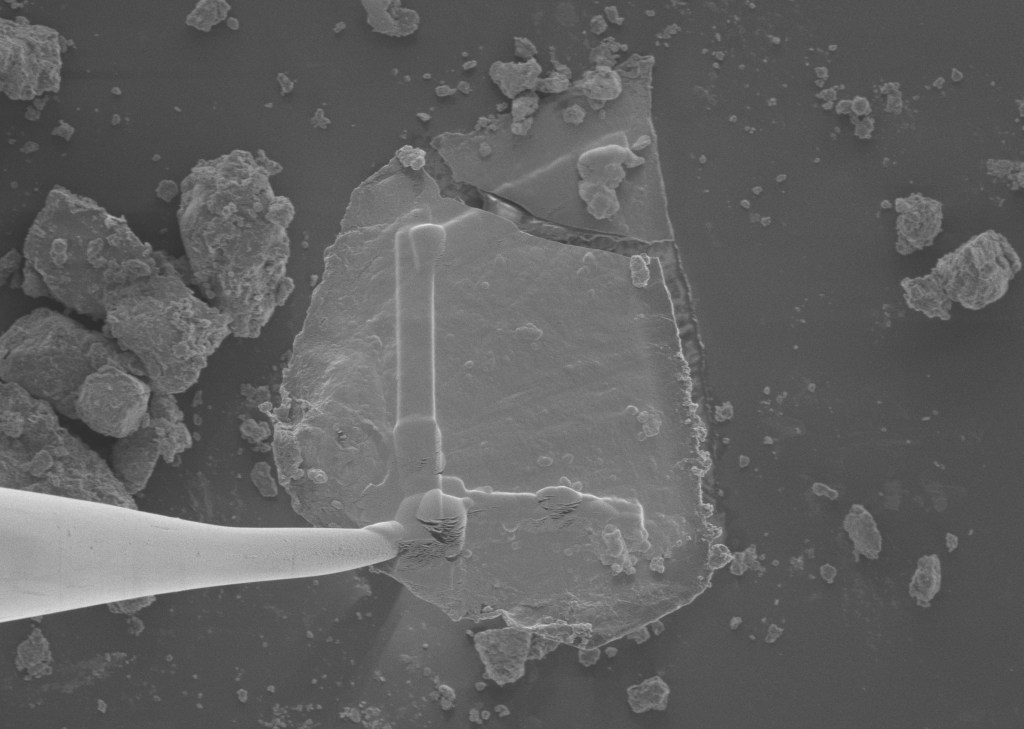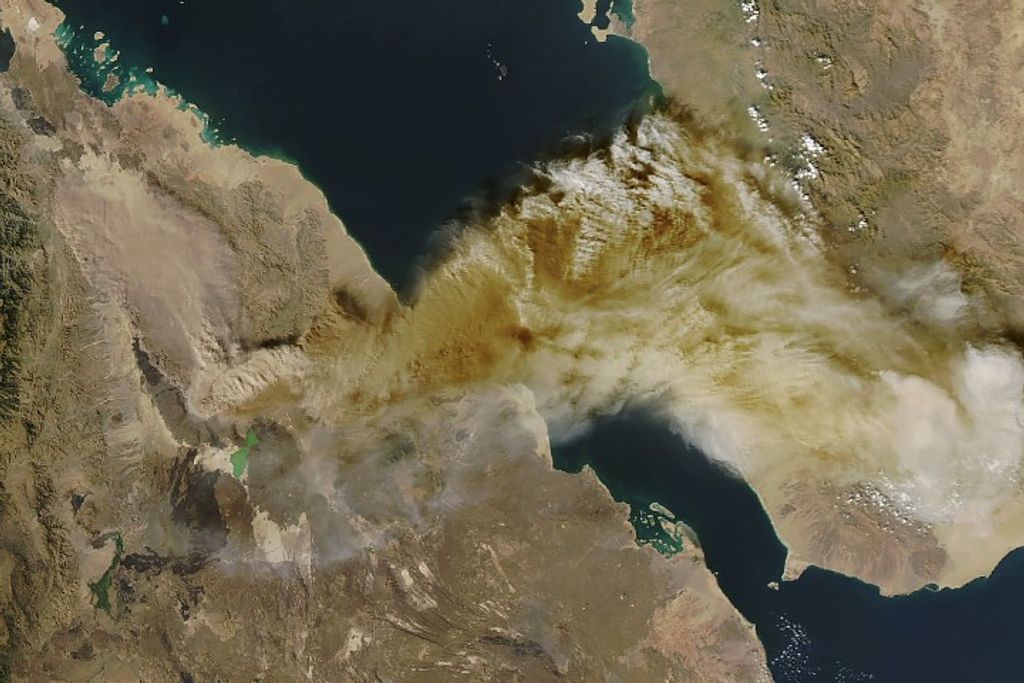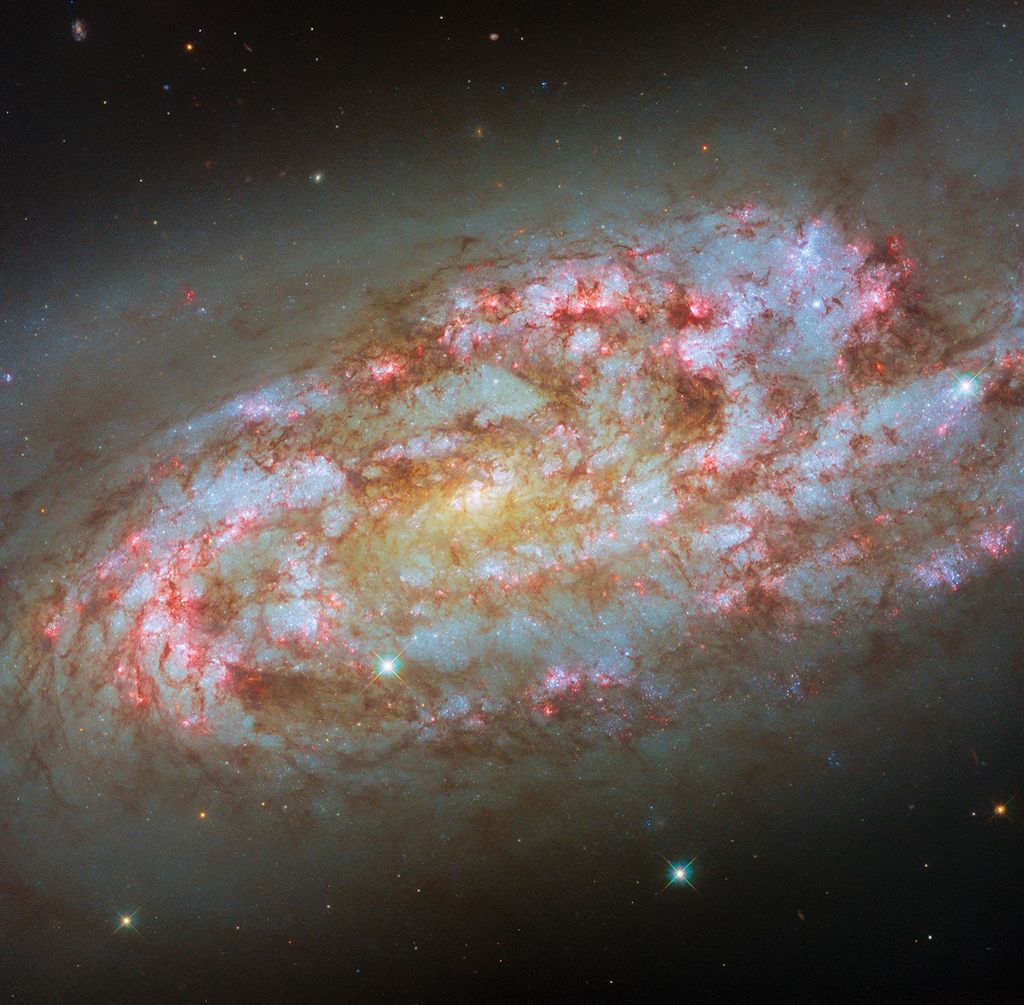Exploring Our Solar System with Webb
Viewing our cosmic neighbors in a new light
Whether exploring the small bodies or giant planets of our solar system, the James Webb Space Telescope is revolutionizing our understanding of our closest cosmic neighbors. With its powerful infrared instruments, sharp spatial resolution, and exquisite sensitivity, Webb is forever changing our view of our celestial backyard. It is helping scientists answer important questions about our solar system, including:
- How was the solar system formed and how has it changed over time?
- Where did the chemicals necessary for life on Earth, like water and carbon compounds, come from?
- What are the icy small bodies in the outer solar system made of?
- How are planets around other stars like planets in our solar system?

Webb’s extraordinarily sensitive spectroscopic instruments and state-of-the-art imaging capabilities enable analysis and mapping of solar system objects’ atmospheres and surfaces. This is critical for studying planets, dwarf planets, moons, comets, asteroids, and ring systems. However, because Webb cannot point toward the Sun, it cannot observe objects between it and the Sun: Mercury, Venus, Earth, or Earth’s moon.
Scientists are now using Webb to conduct detailed investigations of terrestrial Mars, gas giants Jupiter and Saturn, and ice giants Uranus and Neptune. Webb is also setting its sights on primordial bodies, such as comets and Kuiper Belt objects like Pluto. Perhaps most exciting is that, by studying the active moons Europa, Enceladus, and Titan, we can learn more about the chemistry of the outer solar system.
Below are examples of some of the recent, pioneering solar system science from the Webb telescope. All of the pictures in this article come from Webb’s NIRCam (Near-Infrared Camera) instrument.
- New jet stream feature seen in Jupiter’s atmosphere: Webb revealed a narrow jet stream speeding over Jupiter’s equator at 320 miles per hour. This high-speed jet stream is giving researchers incredible insight into how the layers of the planet’s atmosphere interact with each other.
- The dramatic rings and dynamic atmosphere of Uranus: Webb showed us an intriguing, infrared view of Uranus’ rings, moons, storms, and the oddly tipped planet’s bright, north polar cap. Studying this ice giant can help astronomers understand the formation and weather of similarly sized planets around other suns.
- Carbon on Europa’s surface suggests a favorable environment for life in the moon’s subsurface ocean: Jupiter’s moon Europa is a fascinating world with a salty subsurface ocean of liquid water. Using Webb, astronomers found carbon on Europa’s surface that likely originated in this ocean. This biologically essential chemical is the universal building block for life as we know it.
- Detailed view of DART impact: Webb had a front-row seat to a first-of-its-kind NASA test for defending Earth against potential asteroid or comet hazards. The DART mission intentionally smashed a spacecraft into Dimorphos, the moonlet in the double-asteroid system of Didymos. Teaming with Hubble and ground-based telescopes, Webb helped confirm the success of the test to alter Didymos’ orbit. This observation demonstrated Webb’s ability to track small, fast-moving objects in the solar system.
Planets
Planets can be challenging to image with Webb because they are:
- Very bright (they can saturate the telescope’s sensitive detectors, even with the shortest possible exposures)
- Extended objects (as opposed to a point source of light, such as a star)
- Rotating rapidly
- Moving quickly in the sky
Despite these challenges, exciting early results prove that it is possible to study planets with Webb. The telescope captured images and spectra of Mars, which allow scientists to study short-term phenomena, like dust storms, weather patterns, seasonal changes, and, in a single observation, processes that occur at different times during a Martian day.
In addition to finding the speedy Jovian jet stream described above, Webb’s view of Jupiter includes many fascinating details, including auroras, hazes, and tiny moons.
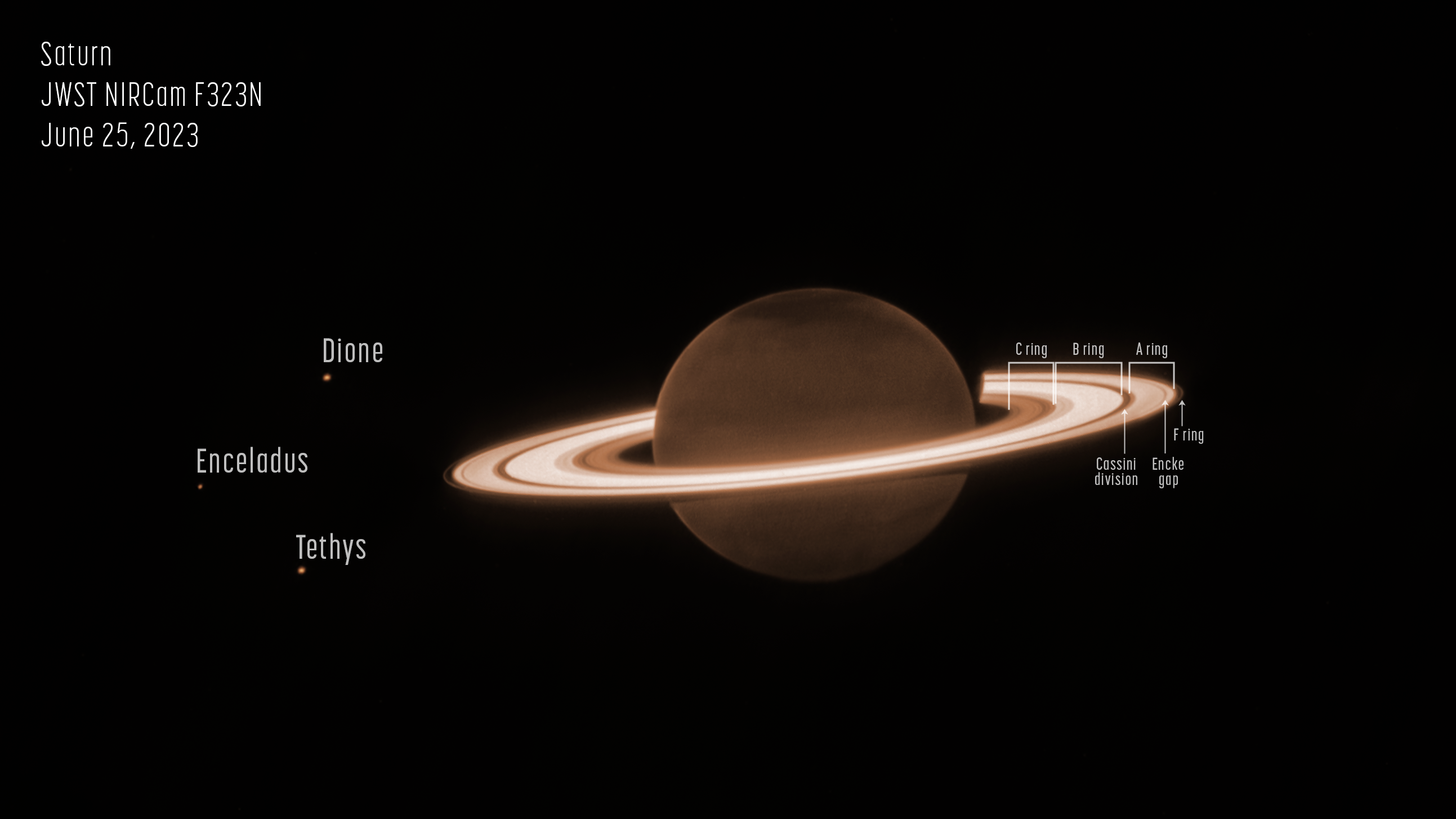
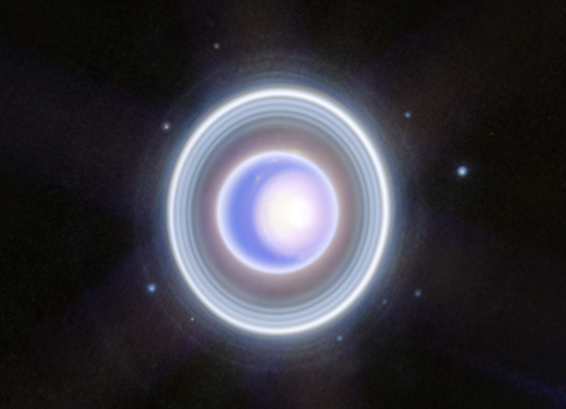
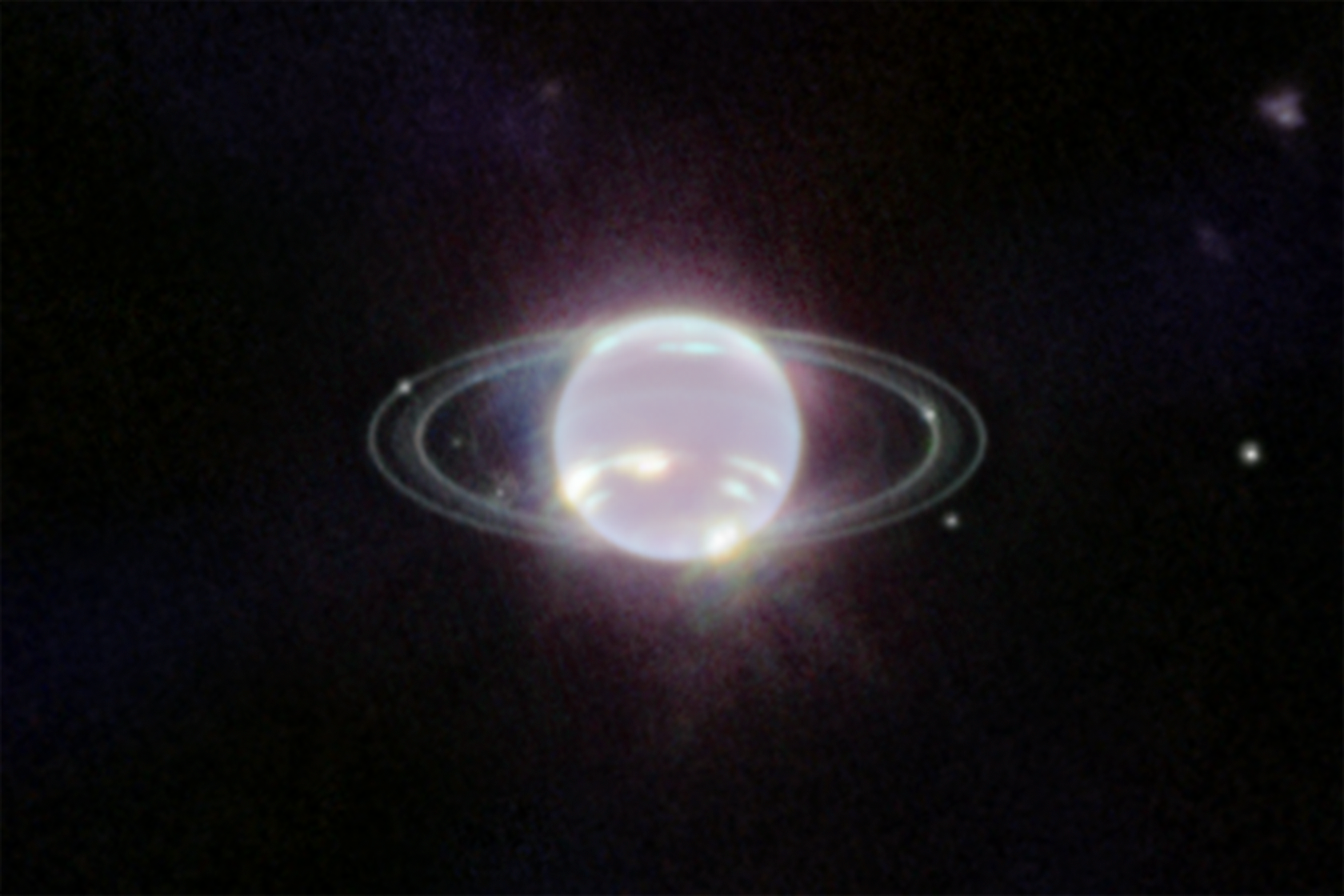
Moons
In addition to finding carbon on the surface of Jupiter’s moon Europa that likely originated in its subsurface ocean. The telescope also detected a shockingly large water-vapor plume spewing from Saturn’s moon Enceladus. For the first time, Webb is giving scientists a direct look at how the water gushing from the surface of Enceladus — first detected by the Cassini spacecraft — feeds the entire system of Saturn, including its rings.
Get video details and downloads in the Video gallery, or download video captions (no audio, VTT), and transcript of the audio description (Word Doc, 19 KB).
Using Webb’s infrared vision to study the atmosphere of Saturn’s moon Titan — the only moon in the Solar System with a dense atmosphere — scientists detected clouds and observed airflow. Titan is the only planetary body other than Earth that currently has rivers, lakes, and seas. Unlike Earth, however, the liquid on Titan’s surface is composed of hydrocarbons, including methane and ethane, not water.
Small Bodies
Webb’s huge mirror and infrared sensitivity make it easier to see small, faint bodies such as Kuiper Belt objects, comets, asteroids, and centaurs. In the first demonstration of this capability, described in detail above, Webb captured the DART impact — NASA’s inaugural attempt to move an asteroid in space.
Webb enabled another long-sought scientific breakthrough, this time for solar system scientists studying the origins of Earth’s abundant water. Using Webb’s NIRSpec (Near-Infrared Spectrograph) instrument, astronomers for the first time have confirmed gas — specifically water vapor — around a comet in the main asteroid belt. This indicates that water ice from the primordial solar system can be preserved in that region. However, the successful detection of water comes with a new puzzle: Unlike other comets, Comet 238P/Read had no detectable carbon dioxide.

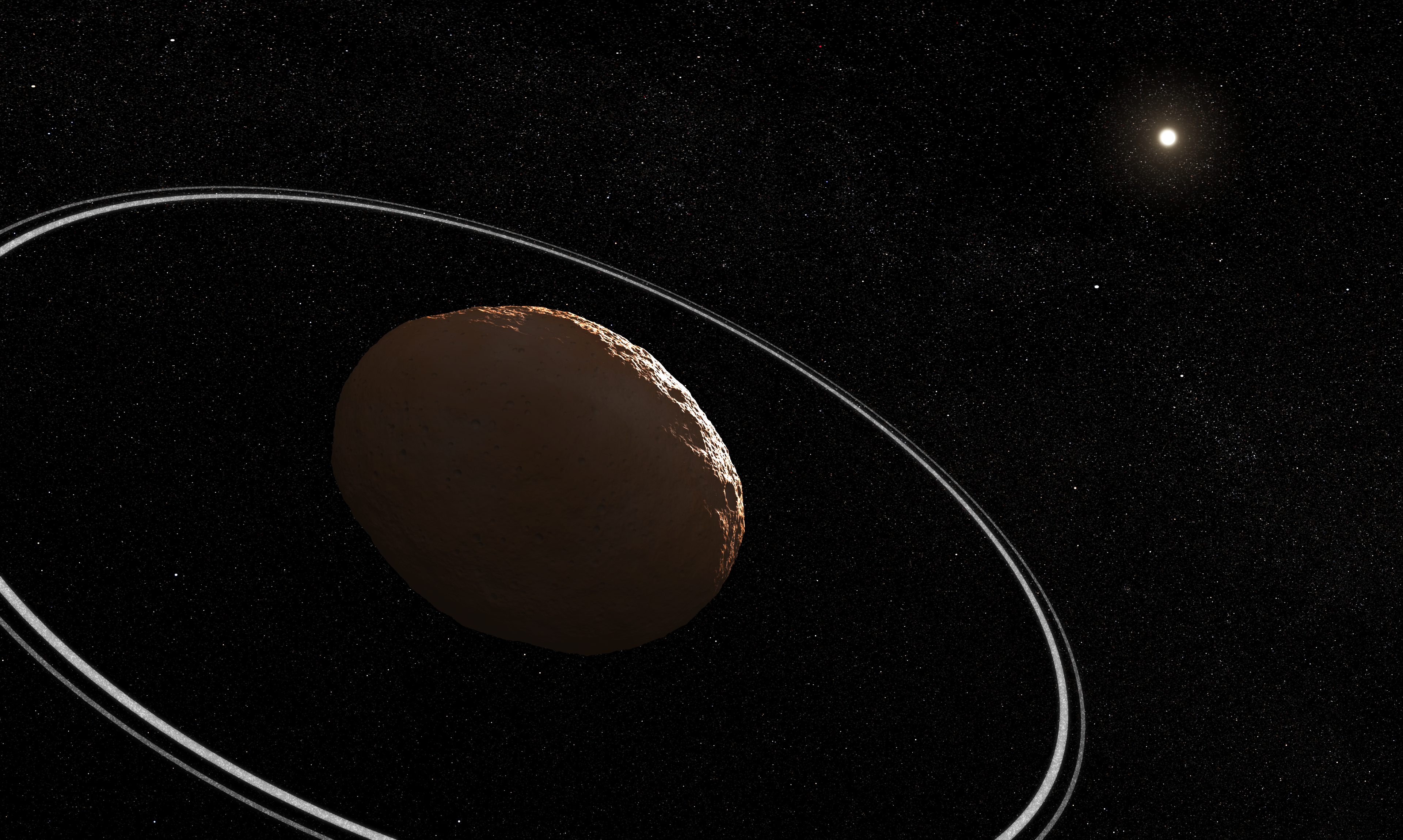
Scientists also used Webb to capture the shadows of starlight cast by the thin rings of Chariklo, a small, icy body more than 2 billion miles beyond the orbit of Saturn. Only 160 miles (250 kilometers) or ~51 times smaller than Earth in diameter, Chariklo is the largest of the known centaur population. Its rings orbit at a distance of about 250 miles (400 kilometers) from its center. Information gathered from these rings will allow astronomers to explore the rings’ thickness, the sizes and colors of the ring particles, and more. Scientists hope to gain insight into why this small body even has rings at all, and perhaps detect new, fainter rings.
Ices
Many different kinds of ice exist in the outer solar system — not just the familiar water ice. Other molecules besides water can form ices, such as nitrogen, methane, ammonia, and carbon dioxide.
Webb excels in the study of ices in the solar system through the use of spectroscopy. Most often, it provides reflectance spectra — sunlight shining on an object and reflecting back, while the surface absorbs particular wavelengths of light.
For ices in the outer solar system, it’s not just the composition that matters; it’s also the shape and structure. Different structures of ice — such as amorphous, crystalline, and irradiated — look different in spectra. The type can tell scientists about the temperature history of the object. In crystalline ice, the molecules are arranged in a highly regular pattern forming lattices, such as in typical water ice on Earth. With amorphous ice, the molecules are irregularly grouped. In the cold, primordial gas between stars and across the universe, amorphous ice is the most common form.

This is why Webb’s integral field units (IFUs) are especially important. With a spectrum in every pixel, scientists can map out the surface of an object. One good example is Jupiter’s moon Europa. By looking at a map of the carbon dioxide on Europa, we can tell that the carbon originated in the oceans because it is most abundant in a region where the terrain is quite new.
Another example of the exquisite quality of Webb spectroscopy is the clear signature of crystalline ice revealed for the first time on Chariklo. Ground-based telescopes had hinted at this ice, but Webb saw the crystalline-ice signature for the first time.
Chemical Building Blocks for Life
Some of Webb’s most intriguing discoveries involve searching for the building blocks of life beyond Earth. This search hinges on the accurate identification of chemical markers, such as water, carbon dioxide, and ammonia. These markers have strong infrared signatures that Webb can detect in the atmospheres and on the surfaces of planets, moons, and smaller bodies.
Studying substances like water, carbon dioxide, ammonia, and organic molecules in the solar system is challenging to do from the ground because all of those molecules are also present in Earth’s atmosphere. It is much easier to accomplish this from space, where any observations of these substances would not be confused with contamination from Earth-based sources.
Keep Up to Date with Webb Science
Keep an eye on the news and follow Webb on Facebook, X, and Instagram.


